A Review of Sabin Howard’s Soldier’s Journey
The Unveiling of the Monumental World War I Memorial
On September 13th, 2024, Sabin Howard's World War I memorial, A Soldier's Journey, was unveiled in Washington D.C.'s Pershing Park. The 8-year project involved designers, government officials, organizations, and both government and private funding. But I want to concentrate just on the sculpture. The bronze high relief sculpture is 60 feet wide and about seven feet tall, with figures roughly 10% larger than life. It weighs 25 tons and features 38 figures, telling the story of a soldier’s journey—leaving his home and family to go to war, experiencing the loss of his comrades and the mental anguish, and finally returning home.
All the photos are taken from Sabin Howards X account, link at the bottom of this essay.
I believe the picture below was taken last week, after the placement of the sculpture on location, while the team figured out the permanent night lighting for the test sculpture. Notice the diagonals of the rifles, the postures, and the many limbs. The figures are done dynamically, shifting their weight, caught in movement, and propelling themselves forward. This creates momentum toward the right side of the sculpture.
In this section, notice the grouping of the three men, the woman holding the blinded soldier, and then the solitary figure looking shell-shocked. Also, notice their hands. The soldier in the lower left is perhaps dead or dying, as his hands are in a non-active state. The soldier in the center, being held by the woman, is grasping his face, covering his eyes, which suggests blindness, possibly due to a nefarious agent. All the hands are beautifully done, both in proportion and anatomy, conveying the solidity of bone structure and knuckles, while also capturing the delicacy of veins. The solitary figure’s left hand is in a gesture, almost as if asking, "Why?"
The grouping of the three soldiers and the group of the man and the woman are also reminiscent of Michelangelo's Pietas. The interaction and composition of the figures in these groupings are extraordinary. The geometry of conveying natural figures in interaction is one of the highest forms of mathematical calculation, though it is often taken for granted when accomplished in sculpture. This is partly because math is integrated with emotional pathos. The intensity of the expressions is what the viewer registers most intensely, but the powerful geometry is technically so brilliant that it provides a drum roll to the high emotional notes.
Above is Sabin Howard, checking if all the elements are right during the installation. To his immediate left, notice the facial expressions of the two soldiers. The picture also gives you a sense of the size of the figures.
This is a great shot that shows how a sculptor conveys optics solely through 3D form. Notice how the front soldier appears to have lighter-colored or maybe blue eyes? I'm guessing he gave a little more relief to the iris so that it would catch the light. He does the same allusion to the American flag, with the white stripes being in more relief than the red ones.
These creative notes in this photo, which I call the technical theme, highlight how the dynamic composition of all the figures develops the themes of the sculpture as a whole. Notice his note at the bottom left: “All have to tell a story,” and his mathematical reminder that “geometry is structure.” You can also see that he refers to the start on the left and the end on the right as bookends that are slow, with dramatic compositions midway that drive the momentum. Two major diagonals create an X in the middle. The high point towards the end is the upraised flag, suggesting the war is over and they have won.
The sculpture as a whole is a monumental project in concept, designed to last for thousands of years, like great Egyptian works. Most people would not associate such an epic work with the simple perceptual observation of a real model wearing period dress and the sculptor capturing the nuances of a tiny fold. It’s like a pyramid being based on a teardrop. An artist’s true perception of reality not only brings the sculptor but also the viewers back to real life; it’s not just an abstract construct. Perception of reality, in psychological terms, is the antithesis of psychosis—it connects us to reality and, consequently, to mental health and mental flourishing.
In this picture, we see one of the figures in miniature compared to the human hand. The smaller sculpture is called the maquette, and often sculptors create a monumental project on a small scale to give potential patrons an actual view of what the final project will look like—similar to an architect doing a mock-up of a house that can be placed on a tabletop.
The climax of the sculpture is placed about the last quarter of the sculpture to the right: the towering figure of the shell-shocked soldier. His helmet lies at his feet, suggesting he is unprotected, vulnerable, and raw. His left hand conveys a mixture of emotions, from asking why to perhaps grasping for any reason. His serious face looks outward, but there’s an uncanny, hollow feeling, as if he has seen a ghost. His face shows a mix of shock and numbness, as if he has become dull to the horrors of war. It’s an extraordinary portrait.
The helmet plays a powerful, yet mysterious role in symbolism in this narrative sculpture. It opens on the left with the daughter handing her father his helmet, right side up, in the hope that it will protect him in war. At the end of the narrative, at the end of the soldier's journey, he returns the gesture by giving his daughter the helmet, but instead of being upright, it’s turned upside down. This perhaps suggests that the helmet couldn’t protect him from the mental anguish of war. Like a bowl in his hand, asking for alms, he might need her support in the coming years of peace. What do you think of the symbolism of the helmet?
Sabin Howard and his writer wife, Traci Slatton.
Frame of References:
Sabin Howard on X: https://x.com/SabinHoward
National World War I Memorial (Washington, D.C.) -Wikipedia https://en.wikipedia.org/wiki/National_World_War_I_Memorial_(Washington,_D.C.)
I highly recommend Googling “Sabin Howard” for all the great coverage he and monument is receiving.




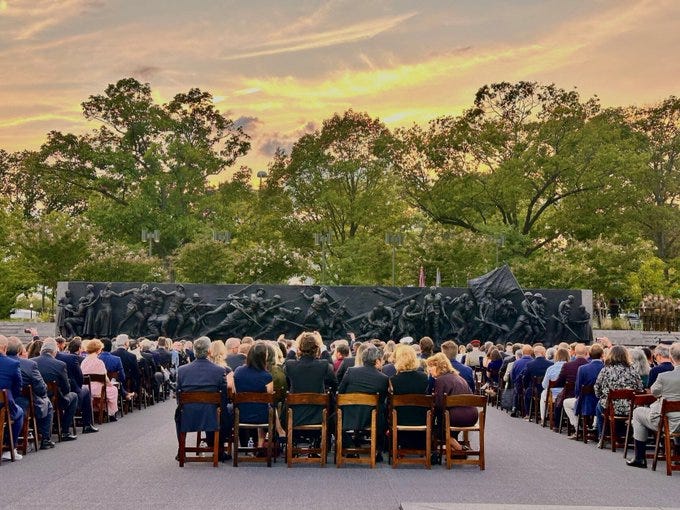
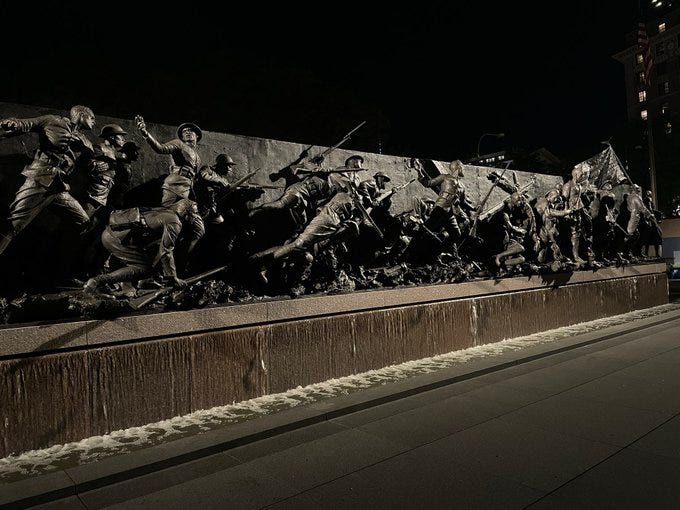
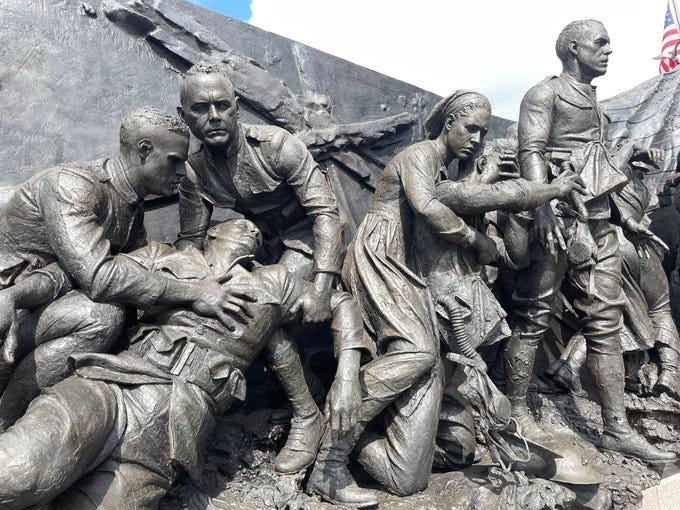
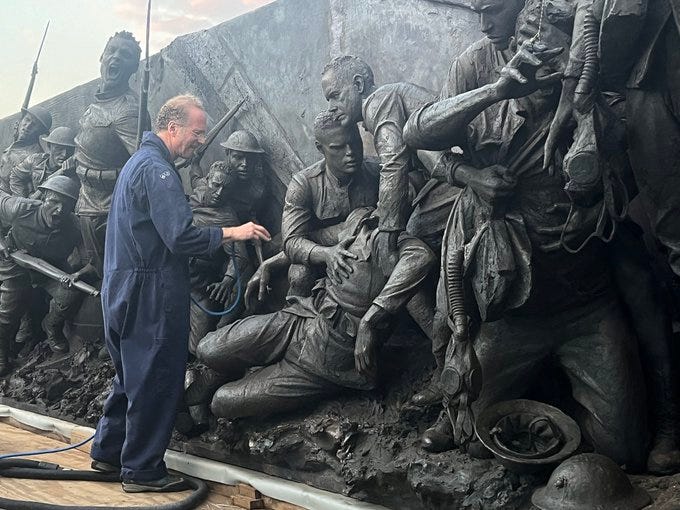
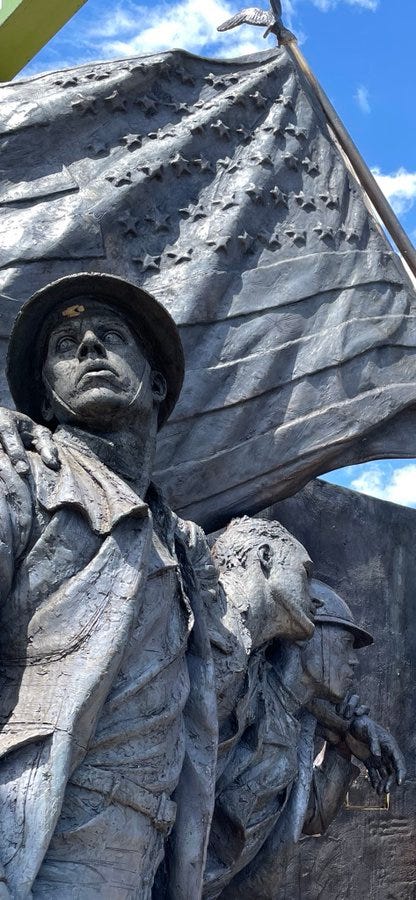
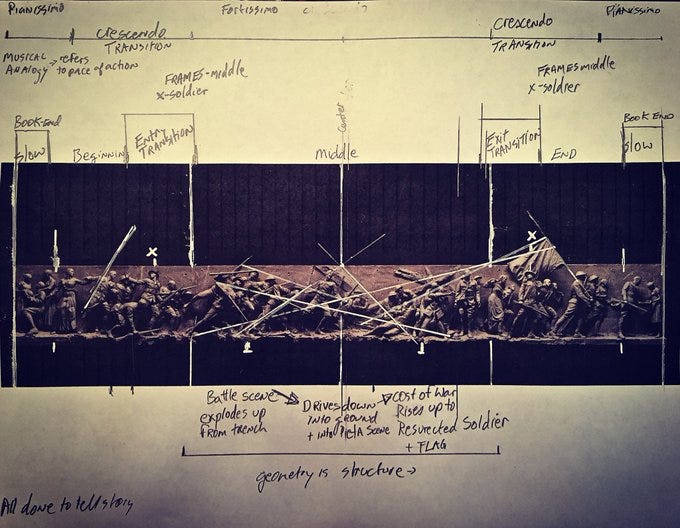
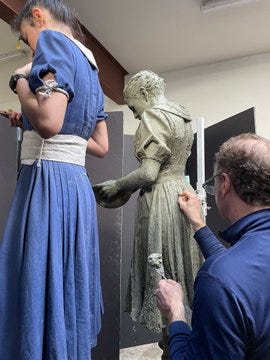
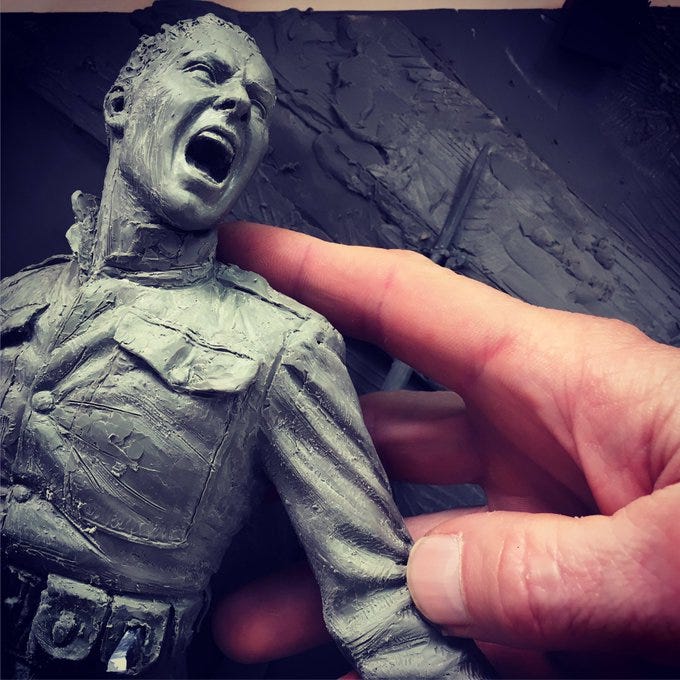
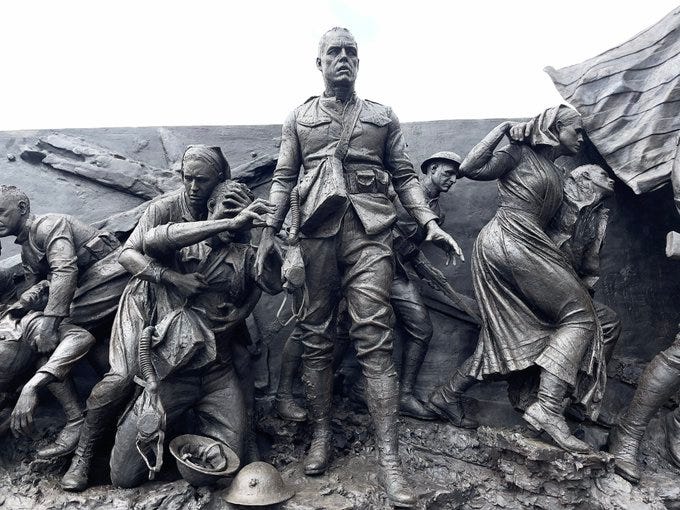
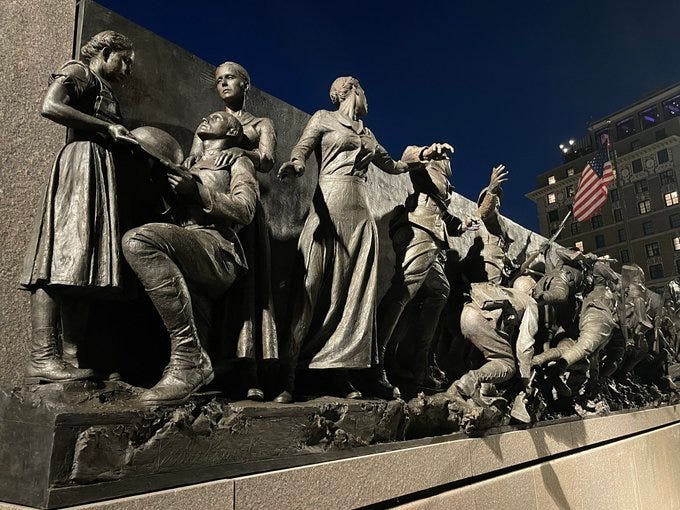
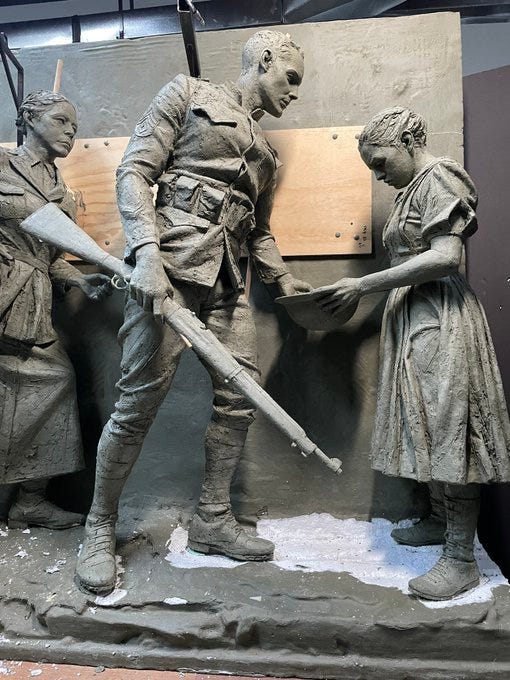
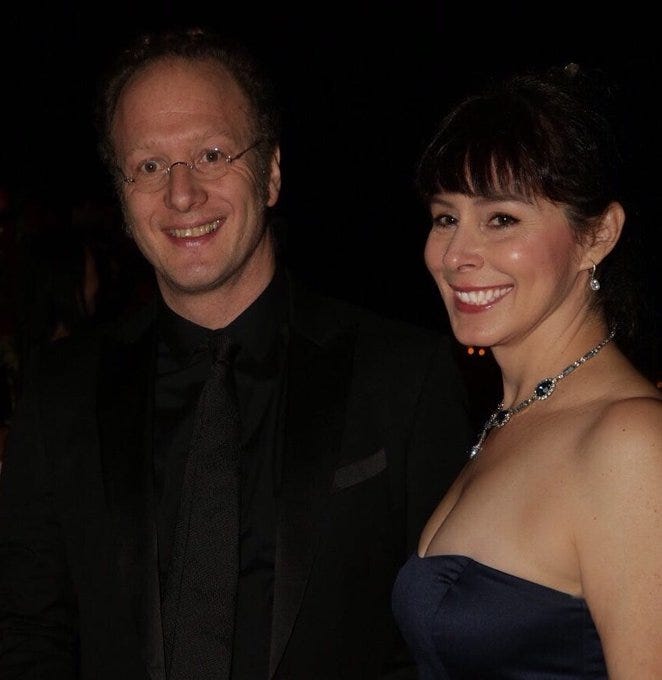
It's been so amazing to watch the creation of this piece. The initial vision, the number of people involved, the multiple locations along the road to this unveiling. Bravo Sabin and thanks for sharing Michael.
A beautifully written artist’s examination of this incredible sculpture, Michael. Thank you for that! I have been following Sabin’s journey with this sculpture from the beginning, and the final exhibition is absolutely breathtaking.